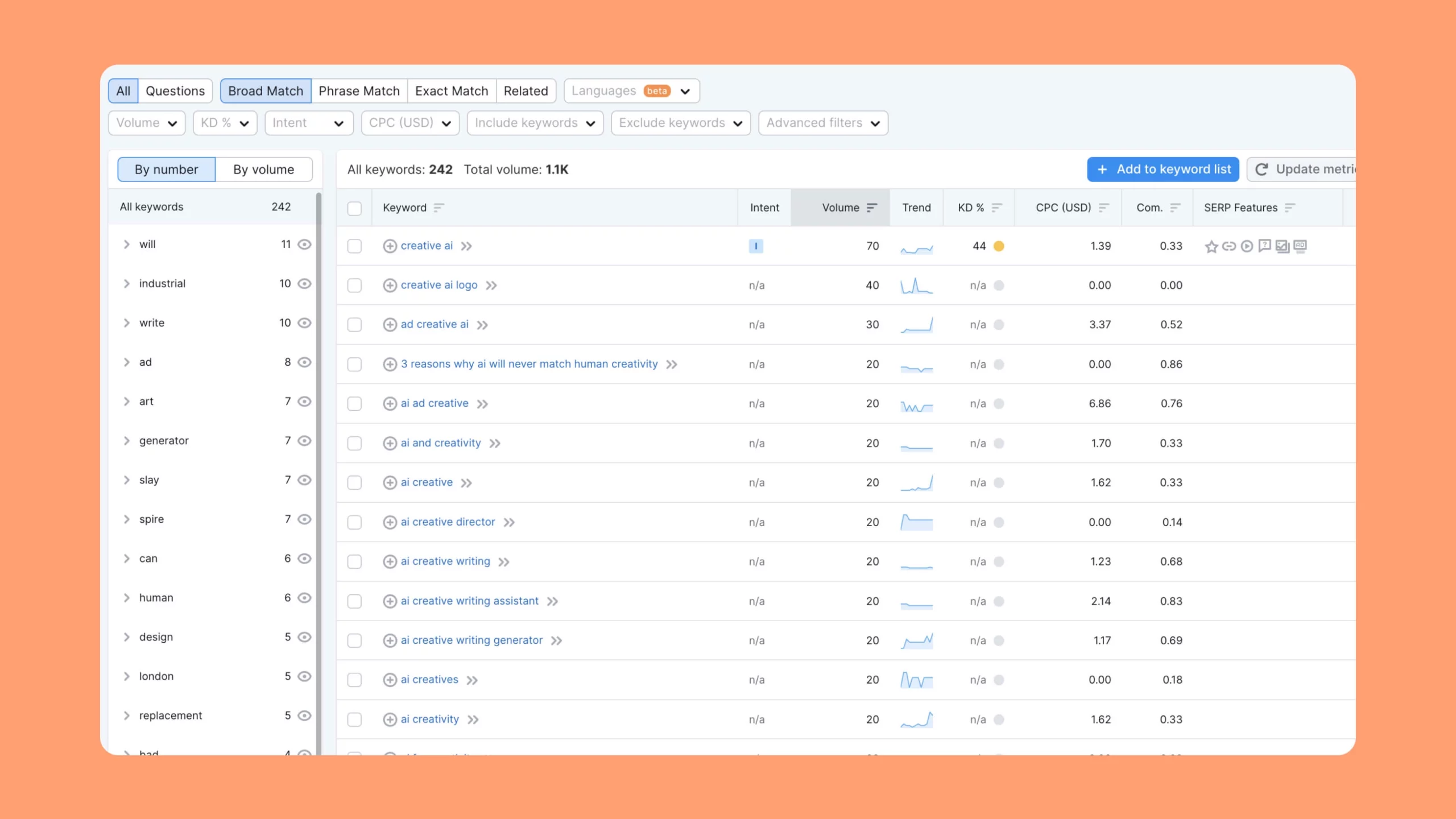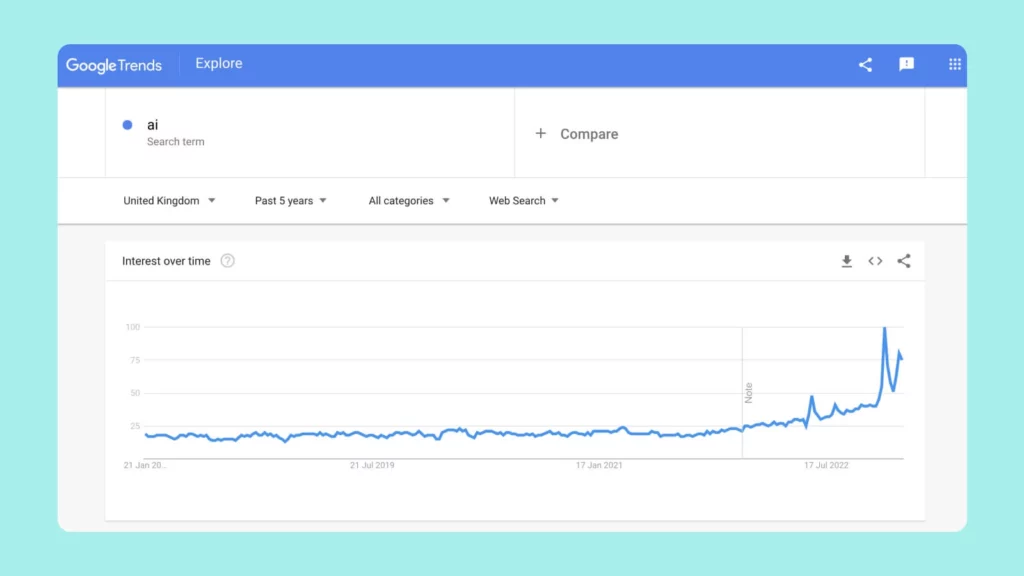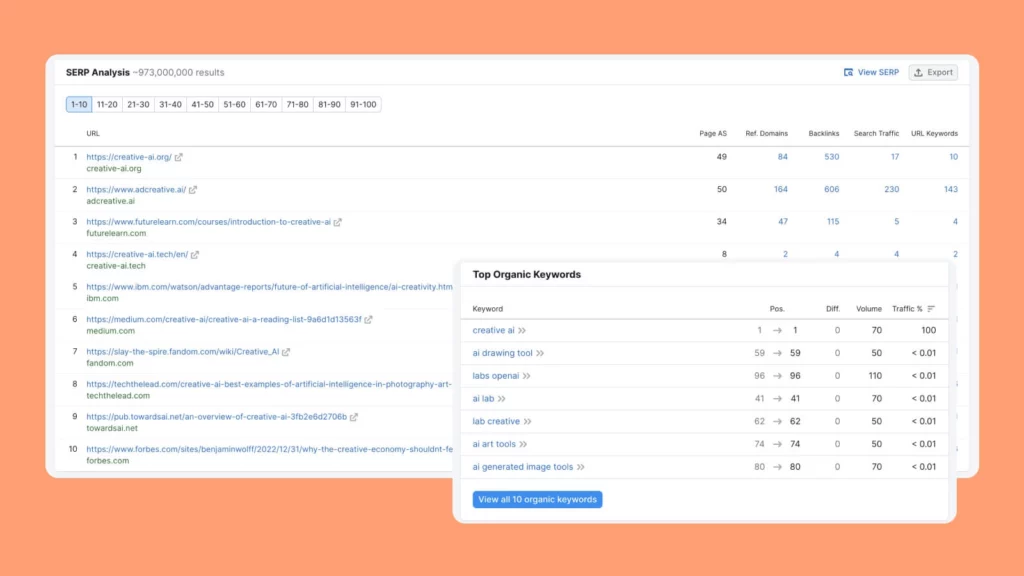Keyword research is one of the most important aspects of SEO (search engine optimisation) and is the foundation of any successful online marketing campaign. It is the process of identifying and analysing the keywords and phrases that your target audience is using to find your products or services. The goal is to optimise your website and content to rank highly for those keywords in search engines like Google and Bing.
In this guide, we will walk you through the steps of keyword research and article creation, so that you can create high-quality content that will help you outrank your competitors and drive more traffic to your website.
Step 1: Identify Your Target Audience
The first step in keyword research is to identify your target audience. This will help you understand their needs and preferences, as well as the language they use to describe your products or services. To do this, you can use tools like Google Analytics, social media analytics, and surveys to gather data on your target audience.

Step 2: Research Keywords and Phrases
Keyword research is the process of identifying and analysing the keywords and phrases that your target audience is searching for online. By understanding the terms and phrases that your audience is using to find information, products, or services like yours, you can create content that is more likely to rank well in search engine results.
There are several tools and strategies that can help you with keyword research. Some popular options include:
- Google Keyword Planner: This tool allows you to enter a keyword or phrase and see related keywords, as well as data on search volume and competition.
- SEMrush: This tool provides a wealth of information on keywords, including search volume, CPC, and competition levels.
- Ahrefs: Ahrefs is a powerful tool for keyword research, providing information on search volume, CPC, and competition levels.
Once you have identified a list of keywords that are relevant to your business and have a high search volume, you can begin the process of article creation.

Step 3: Google Trends
Google Trends is an excellent tool for identifying the hottest topics of the moment. It’s particularly useful if you’re looking to create content that is timely and relevant to current events. Additionally, it provides valuable insights into how the level of interest in certain topics has changed over time.
For instance, it can reveal that the search term ‘ai’ has seen a significant increase in popularity in recent years, indicating that it’s a topic that people are currently more interested in than they were a few years ago. This presents an opportunity to create content on this topic, especially if you can identify an area where there is a lack of information available. Just be sure to utilise the other tools mentioned in this article to refine your keyword research.

Step 4: Analyse the Competition
Once you have a list of potential keywords and phrases, you will want to analyse the competition. This will give you an idea of how difficult it will be to rank for a particular keyword, as well as the types of content that are currently ranking well. You can use tools like SEMrush, Ahrefs, and Moz to analyse your competitors’ backlinks, content, and other factors that may be impacting their search rankings.

Step 5: Create High-Quality Content
Once you have completed your keyword research and analysed the competition, it’s time to start creating high-quality content. The key to successful SEO is creating valuable, informative, and engaging content that addresses the needs and interests of your target audience. This should include a mix of text, images, videos, and other multimedia elements that will keep visitors engaged and on your site for longer.
Creating high-quality, SEO-friendly content is essential for outranking your competition on Google. Some key strategies for creating quality content include:
- Focusing on user intent: When creating content, it’s important to understand the intent behind the keywords you’re targeting. Are users looking for information, to make a purchase, or to solve a problem? Your content should align with the intent behind the keywords you’re targeting.
- Providing value: Your content should provide value to your audience by educating, informing, or entertaining them.
- Using images and videos: Adding images and videos to your content can help make it more engaging and increase the chances of it being shared on social media.
- Optimising for on-page SEO: On-page SEO refers to optimising your content for search engines. This includes using keywords in headlines, meta descriptions, and throughout the body of your content.
Step 6: Optimise Your Content for SEO
After you’ve created your content, it’s important to optimise it for SEO. This includes adding relevant keywords to your title tags, meta descriptions, and header tags, as well as ensuring that your images and other multimedia elements are properly optimised. Additionally, you should make sure that your website is mobile-friendly and that it loads quickly.
Step 7: Planning Your Article To Rank On Google
Developing a plan for your articles is a crucial step in the writing process. Utilise the data you’ve gathered to structure your article, starting with the main title (H1), subheadings (H2s), and potentially going as far as H3-H6 depending on the depth of the article. Incorporate relevant keywords throughout the article to guide its structure.
Generate headlines and subheadings that include keywords with a moderate level of difficulty. This approach is particularly beneficial when working with a team, as it allows for clear communication of your ideas and writing process.

Collect any relevant screenshots and links from your preferred keyword research site and organise them in a document. Additionally, include any other valuable content and links that you’ve utilised during your research phase. Having all of this information easily accessible can serve as a valuable source of inspiration when it comes to writing.
Step 8: The Importance Of SEO Fields In Article Writing
After writing your article, it’s important to check that not only have you produced engaging long-form copy, but you’ve also prepared the copy for various SEO fields; adding a page title, meta description and alt tags are important so that Google can more clearly understand your content when crawling your website.
Page title
The page title is the first thing that a human sees when they are searching for something in Google – it’s the blue clickable link that displays on Google SERP. It’s also the first thing that Google reads.
The more relevant to what people search for, the better. We all visit Google in search of answers, so make your titles answer the questions and you will be rewarded with higher rankings on the search engine results page.
It’s also worth noting that your page title is different to the H1 heading of your article. The page title is limited to 60 characters so as not to be truncated on Google, so a shorter, snappier version of your H1 should be used here.
Meta description
The meta description is a short summary of, or introduction to, your article. It helps Google see, at a glance, what your content is about – it’s limited to 160 characters so get practising your summarising skills!
A meta description is important because it helps Google understand what your article is about at surface level.
Alt tags
Adding alt tags to your images will ensure that any readers who are visually impaired can understand what is in each picture, and Google will be able to digest the images more successfully too.
Step 9: Promote Your Content
Once your content is live, it’s important to promote it to help drive traffic to your site. This can include sharing it on social media, submitting it to directories and other relevant websites, and reaching out to influencers and other industry leaders to see if they would be interested in sharing your content with their followers.
In conclusion, keyword research and article creation are essential components of any successful SEO campaign. By following these steps and creating high-quality content that addresses the needs and interests of your target audience, you can outrank your competitors and drive more traffic to your website.
Conclusion
In conclusion, keyword research and article creation are essential steps in creating high-quality, SEO-friendly content that can outrank your competition on Google. By understanding user intent, providing value, and optimising for on-page SEO, you can create content that is more likely to rank well in search engine results.
If you need any help with developing a creative, engaging and impactful content strategy, you can contact us here

